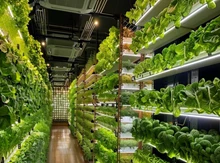
In recent years, the alarming decline in honey bee populations has become a major worry, affecting not just beekeepers but also agriculture and the ecosystems that rely on their pollination services. A new study published in Current Biology offers insights into why our usual way of looking at one problem at a time hasn't given us all the answers we need about what's affecting bee health.
The study, led by Professor Amro Zayed from York Faculty of Science and a diverse team of researchers across Canada, reveals a groundbreaking perspective. Rather than focusing on individual factors like pesticides or viruses, the research adopts a systems-level analysis, recognizing the intricate network of stressors influencing honey bee colonies.
Professor Zayed emphasizes the shift in approach, stating, "We have been so focused on finding the one big thing, the smoking gun, but we are finding that bees are exposed to a very complicated network of stressors that change quickly over time and space."
Social Media Influencers of the Bee World
One intriguing finding from the study is the concept of "influencer stressors" - specific stressors that disproportionately impact the honey bee stressor network. These influencers, often viruses and certain chemicals, show significant interactions with other stressors, compounding negative effects on bee health.
The research, spanning from Québec to British Columbia, underscores the regional and crop-specific variability in stressor exposure faced by honey bee colonies. Honey bees, crucial for pollinating Canada's valuable crops like apples, canola, blueberries, soybeans, and corn, are exposed to an average of 23 stressors simultaneously.
Lead author Sarah French highlights the importance of considering all stressors, including minor pesticides and less-known viruses. The study suggests that understanding these interactions is akin to diagnosing human co-morbidities, where multiple conditions exacerbate each other's effects.
Implications for Bee Health and Agriculture
Honey bees contribute significantly to the economy through pollination services, with an estimated $7 billion value in 2021. However, increasing colony losses and stressors threaten this vital industry. The research underscores the urgent need for tools and strategies to manage key stressors and preserve bee health.
The study, part of the BEECSI project funded by Genome Canada, calls for continued research to decipher stressor interactions and their impact on bee mortality. Understanding these dynamics will guide the development of targeted interventions to support honey bee populations. By adopting a network-based approach, researchers are paving the way for more effective strategies to mitigate stressors and safeguard honey bee populations critical to agriculture and ecosystems.
(Source: York University)











